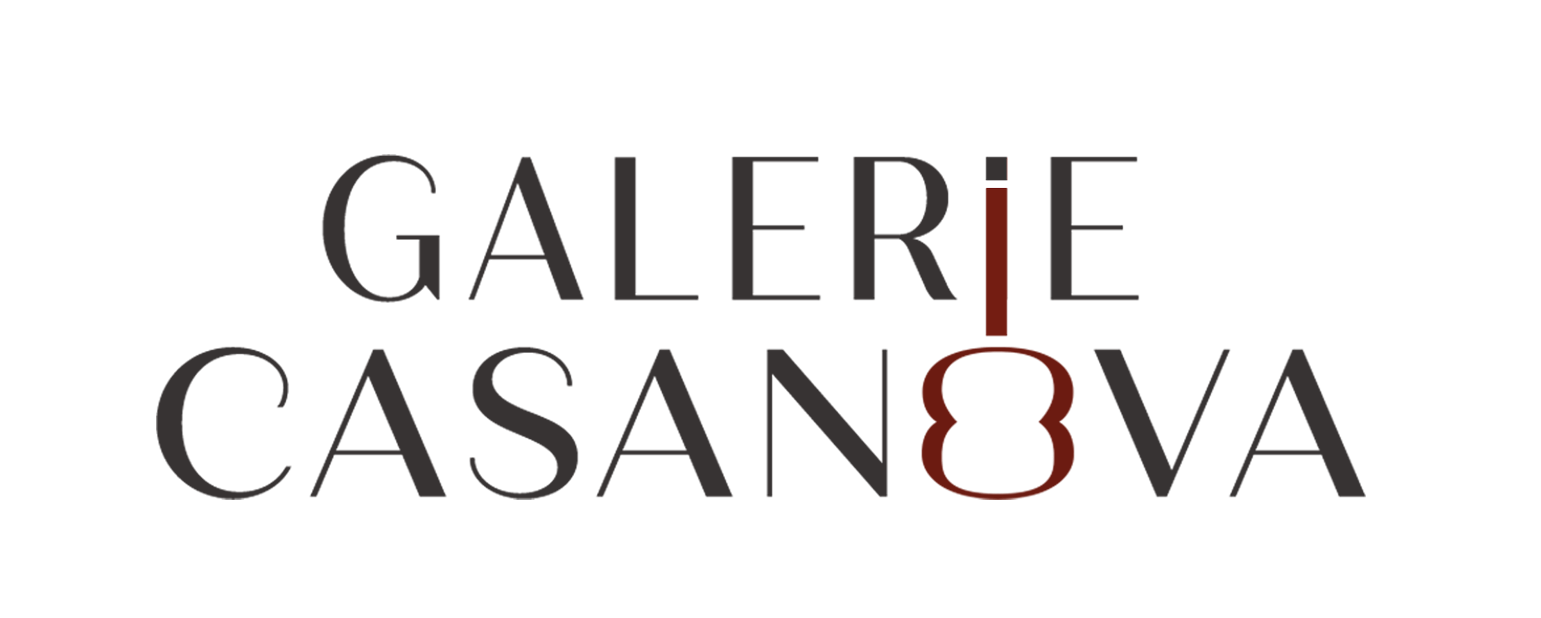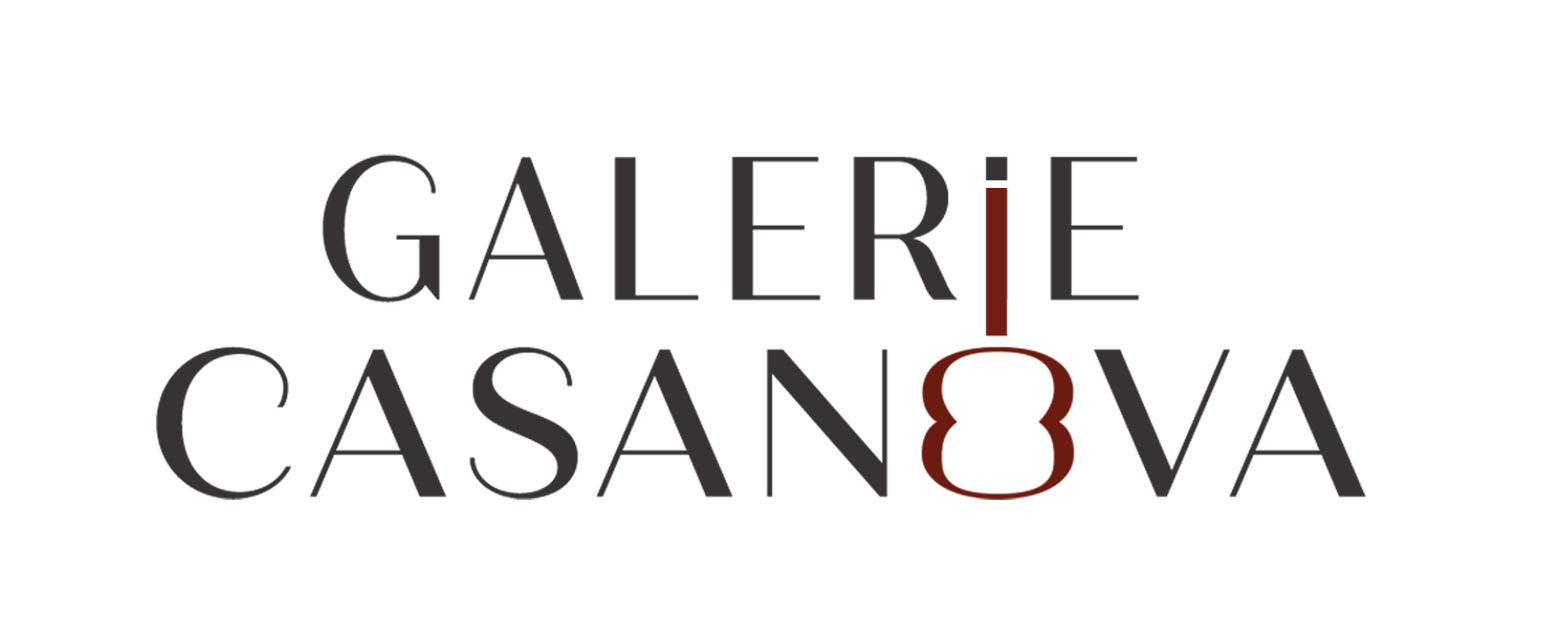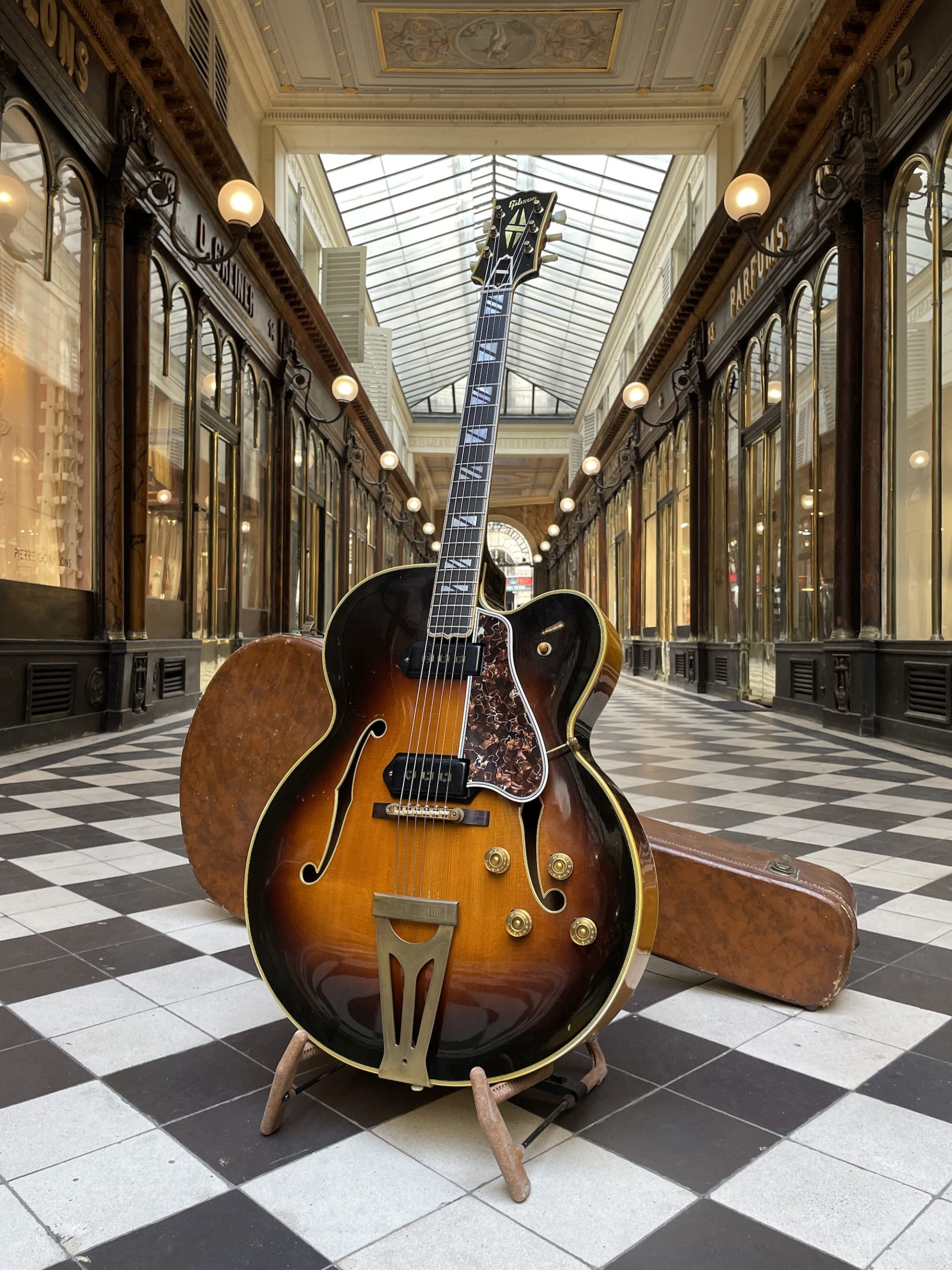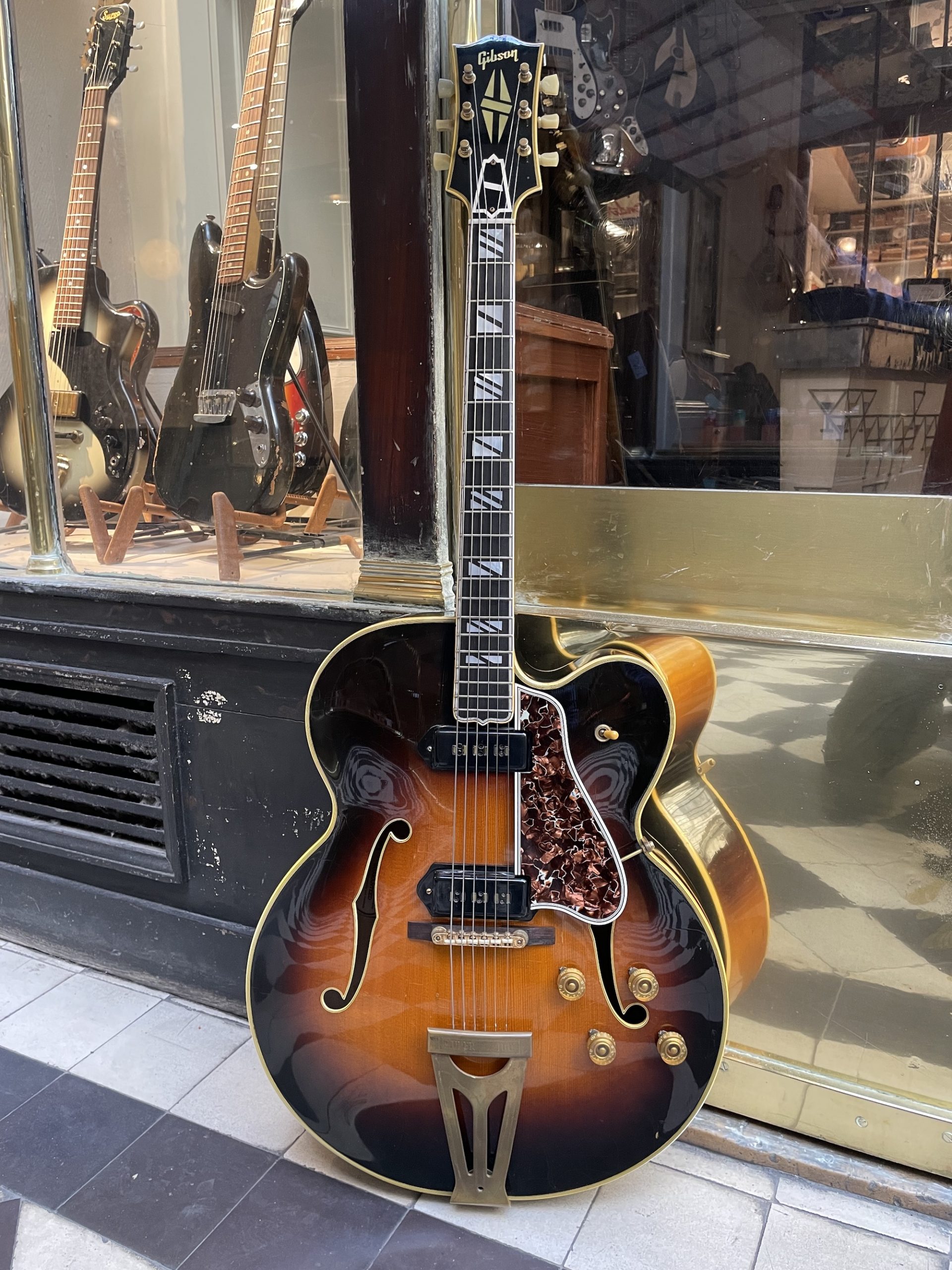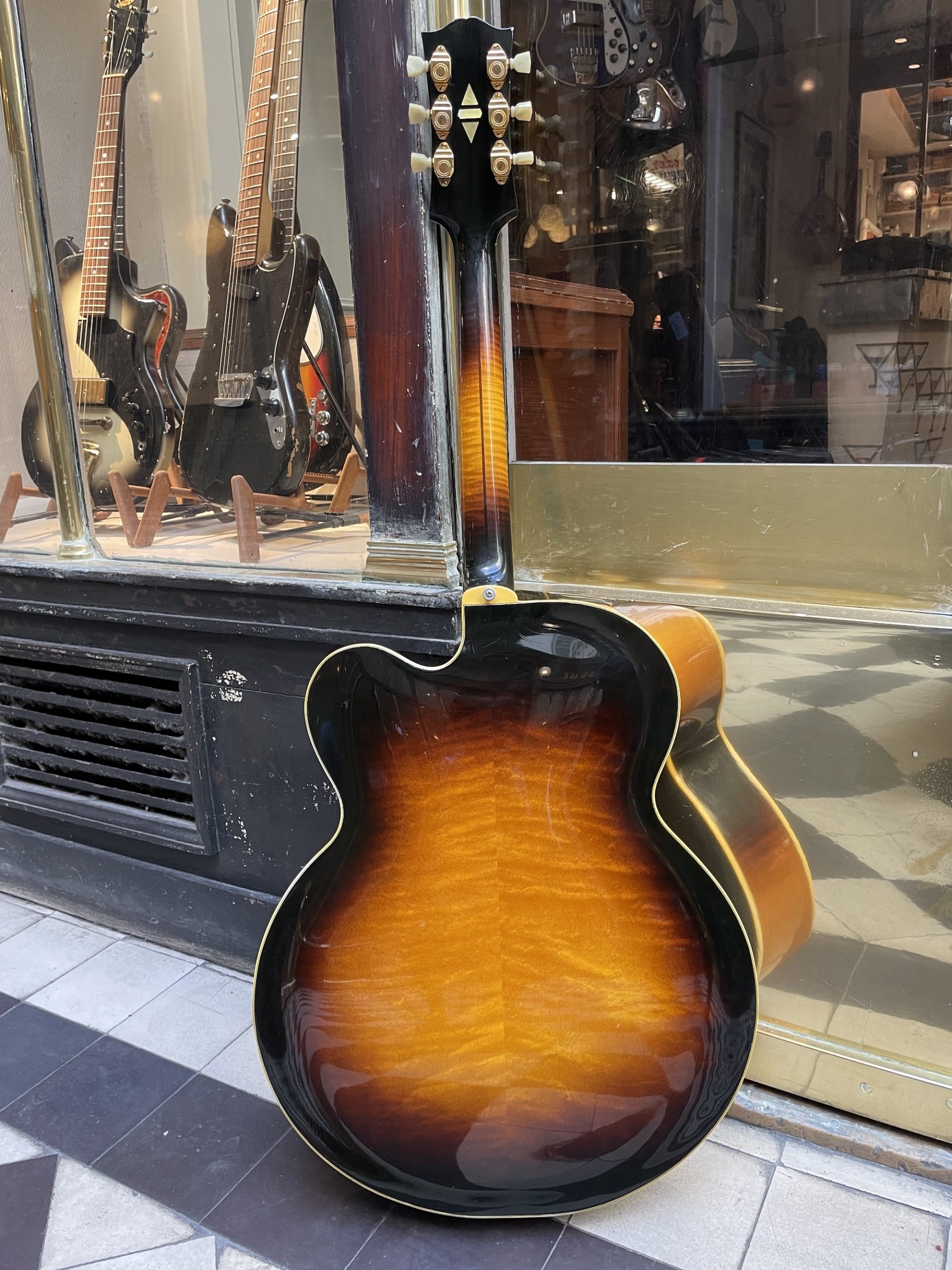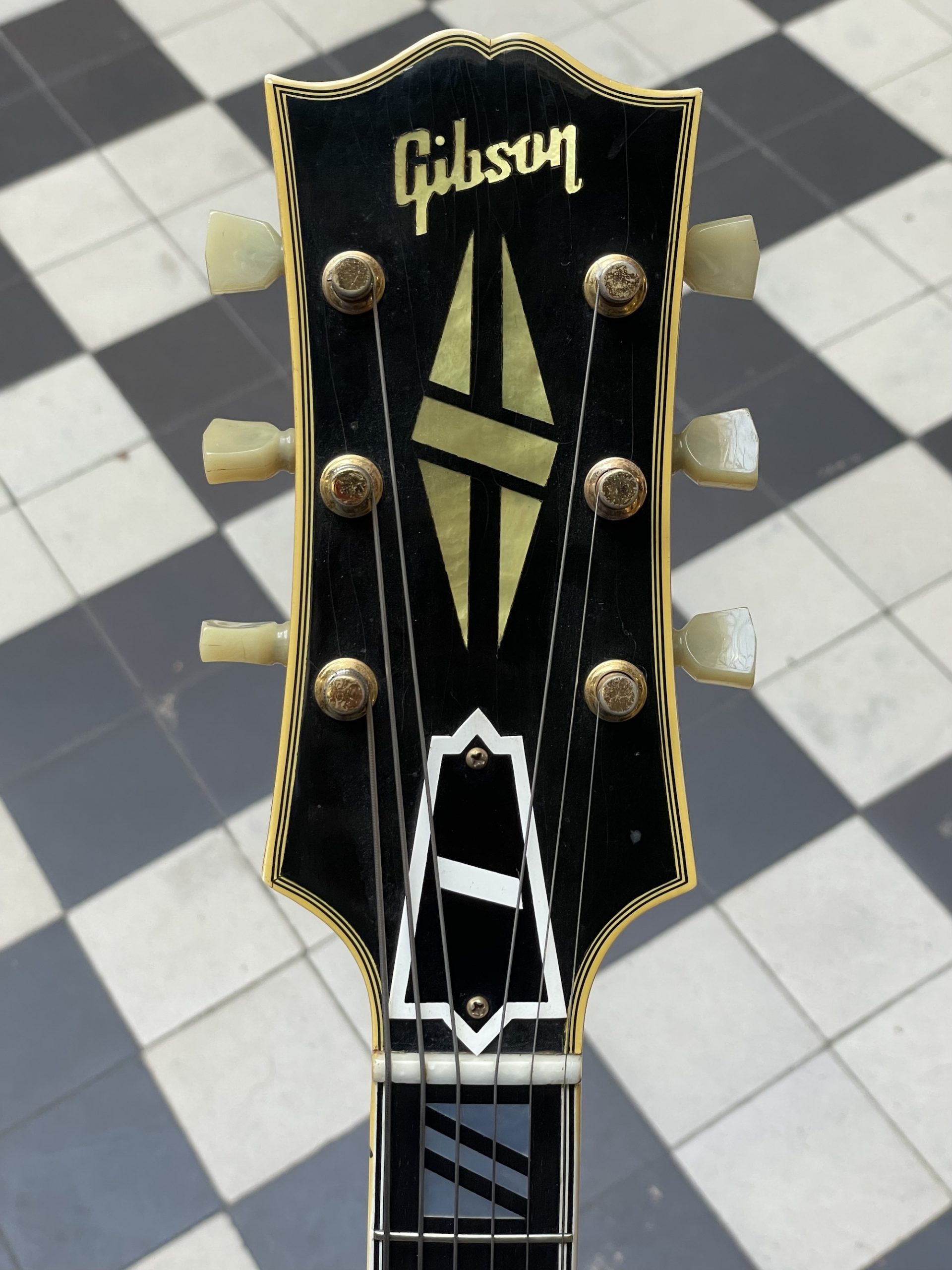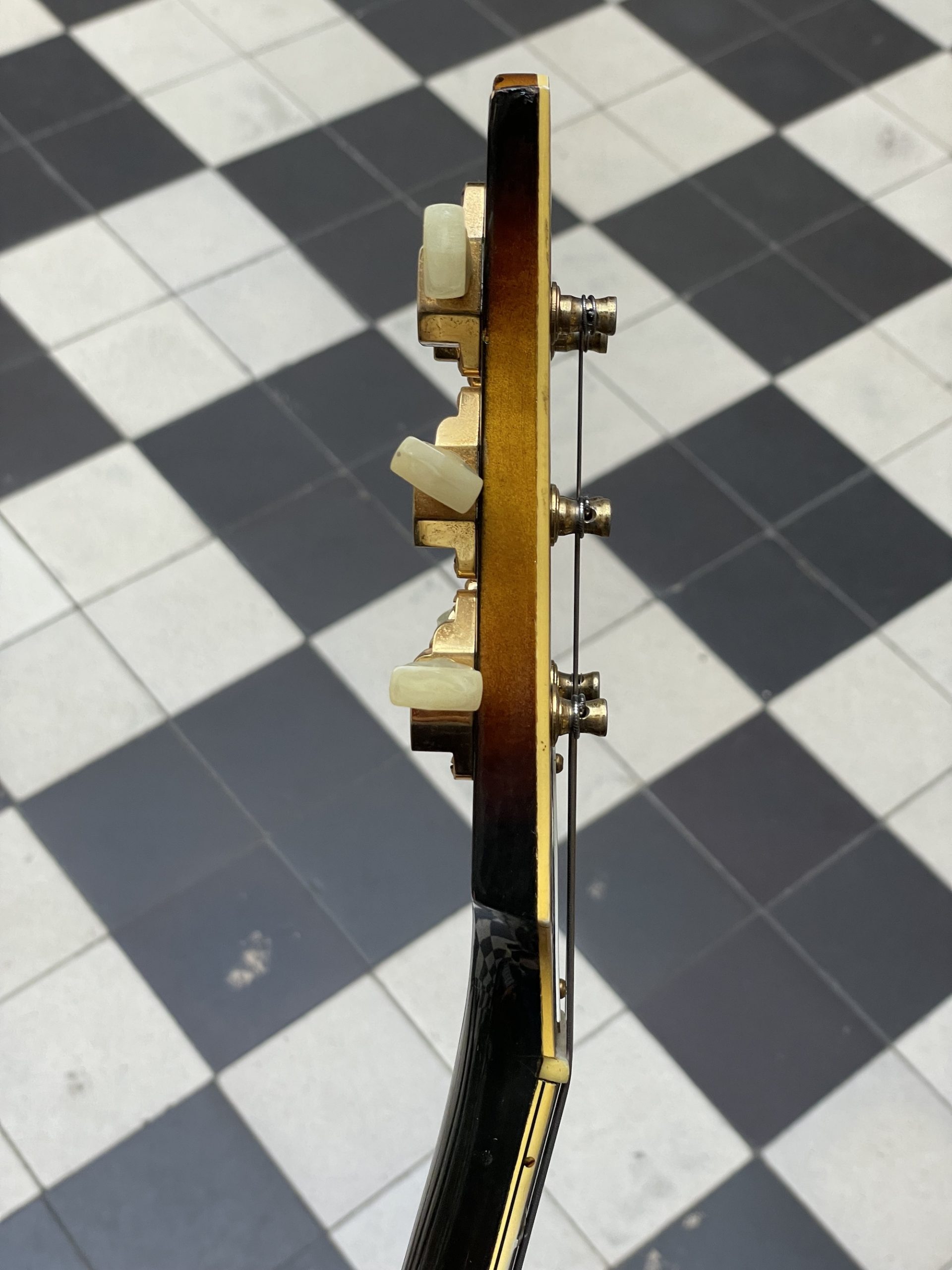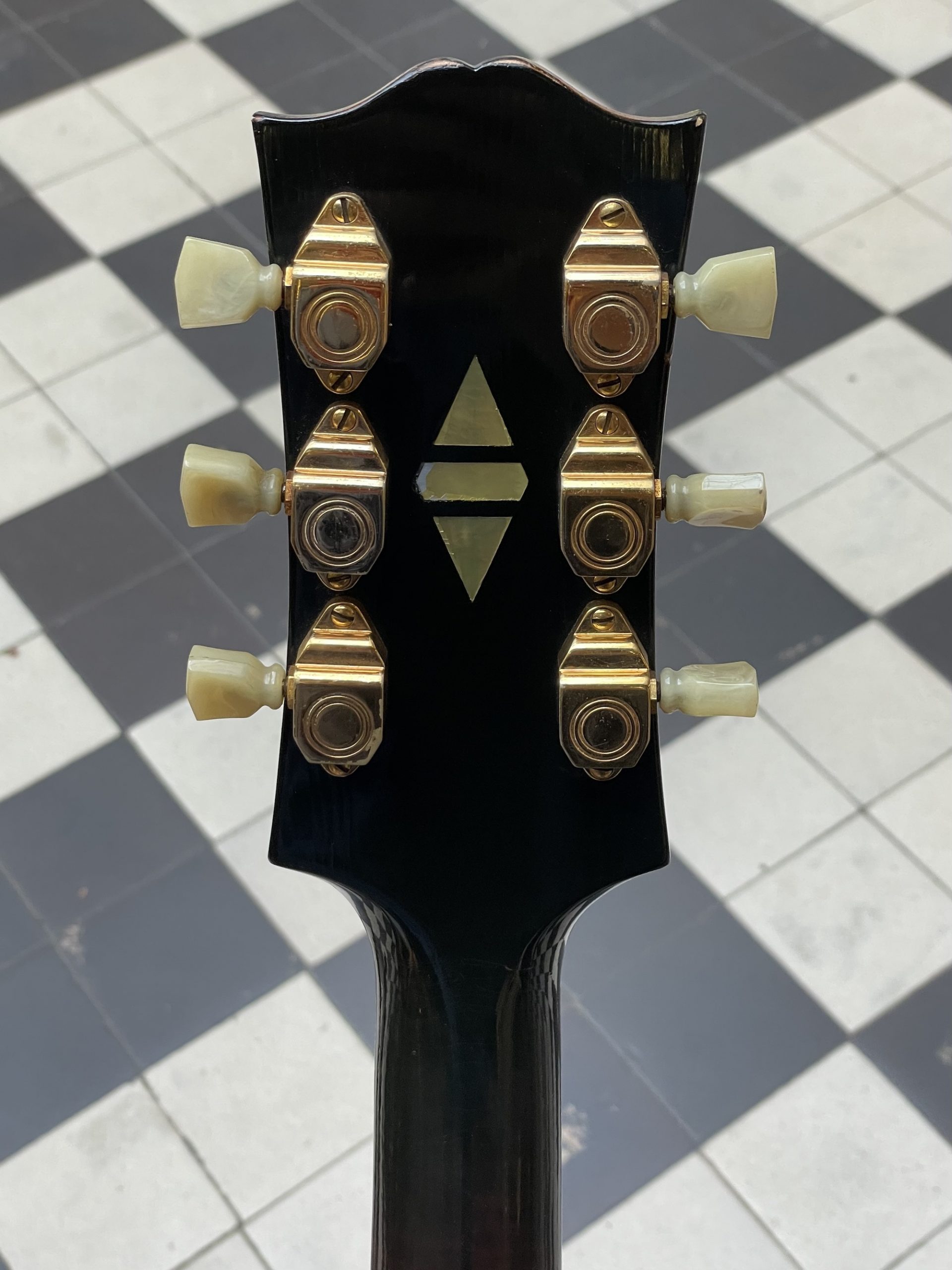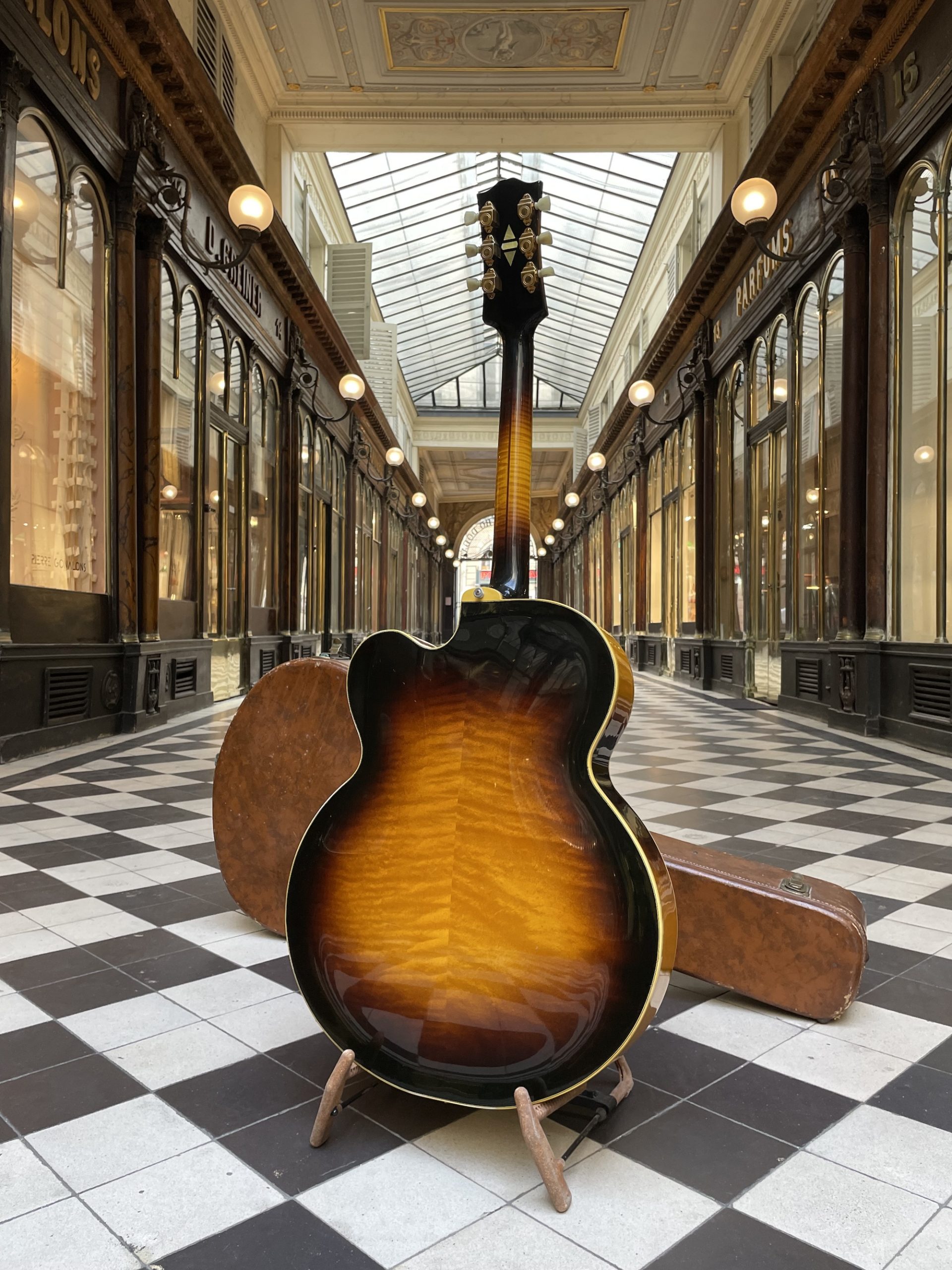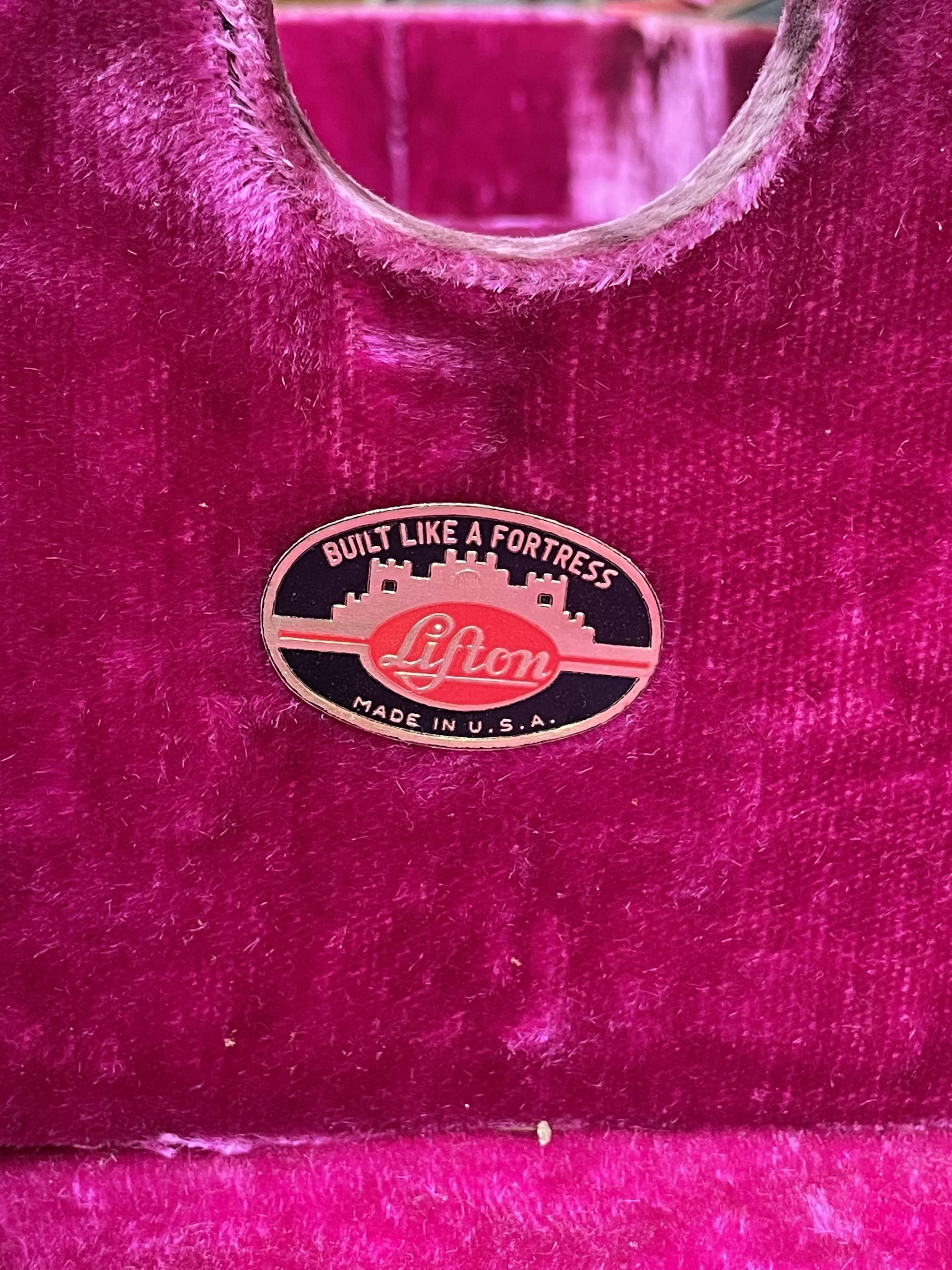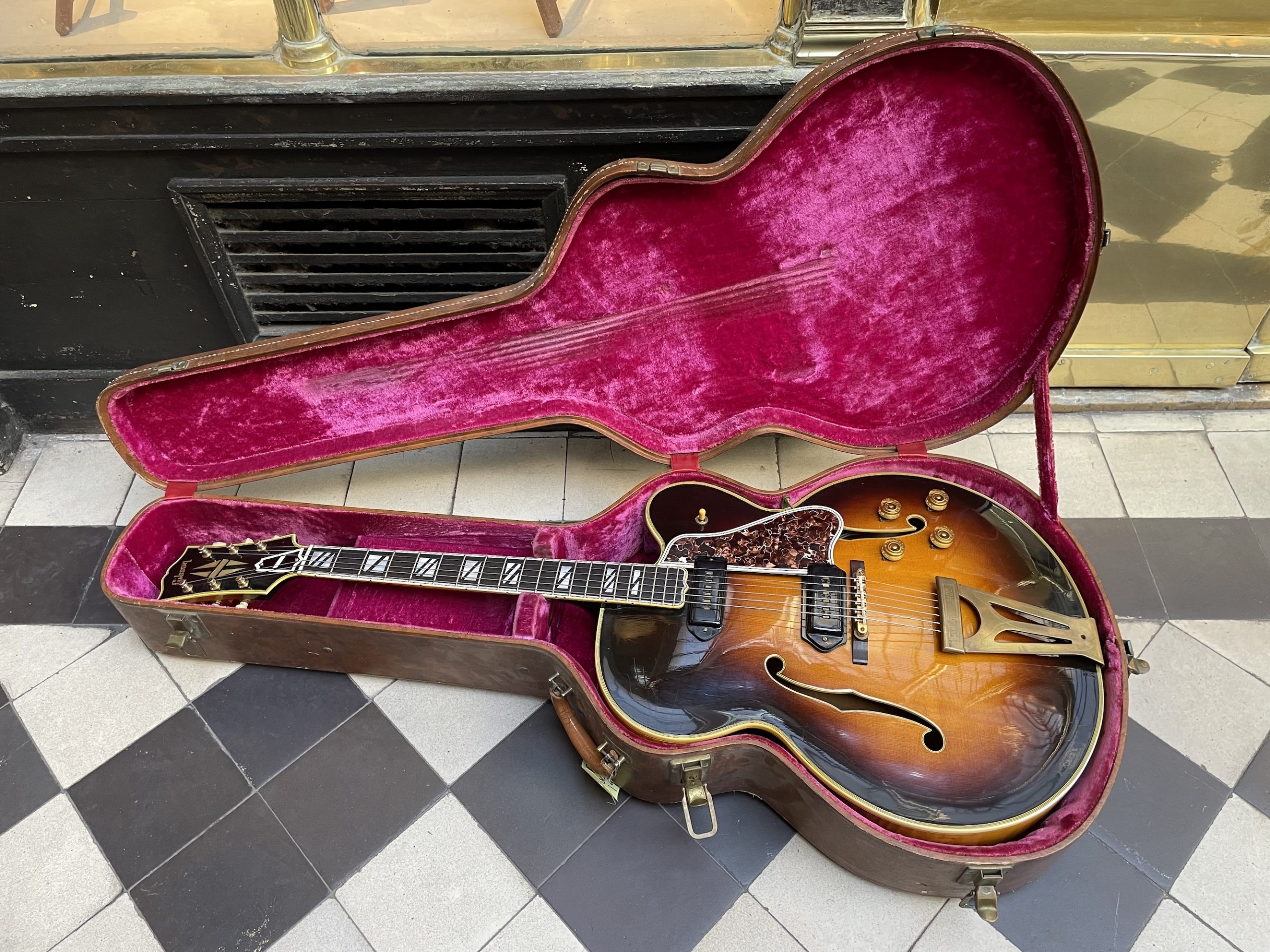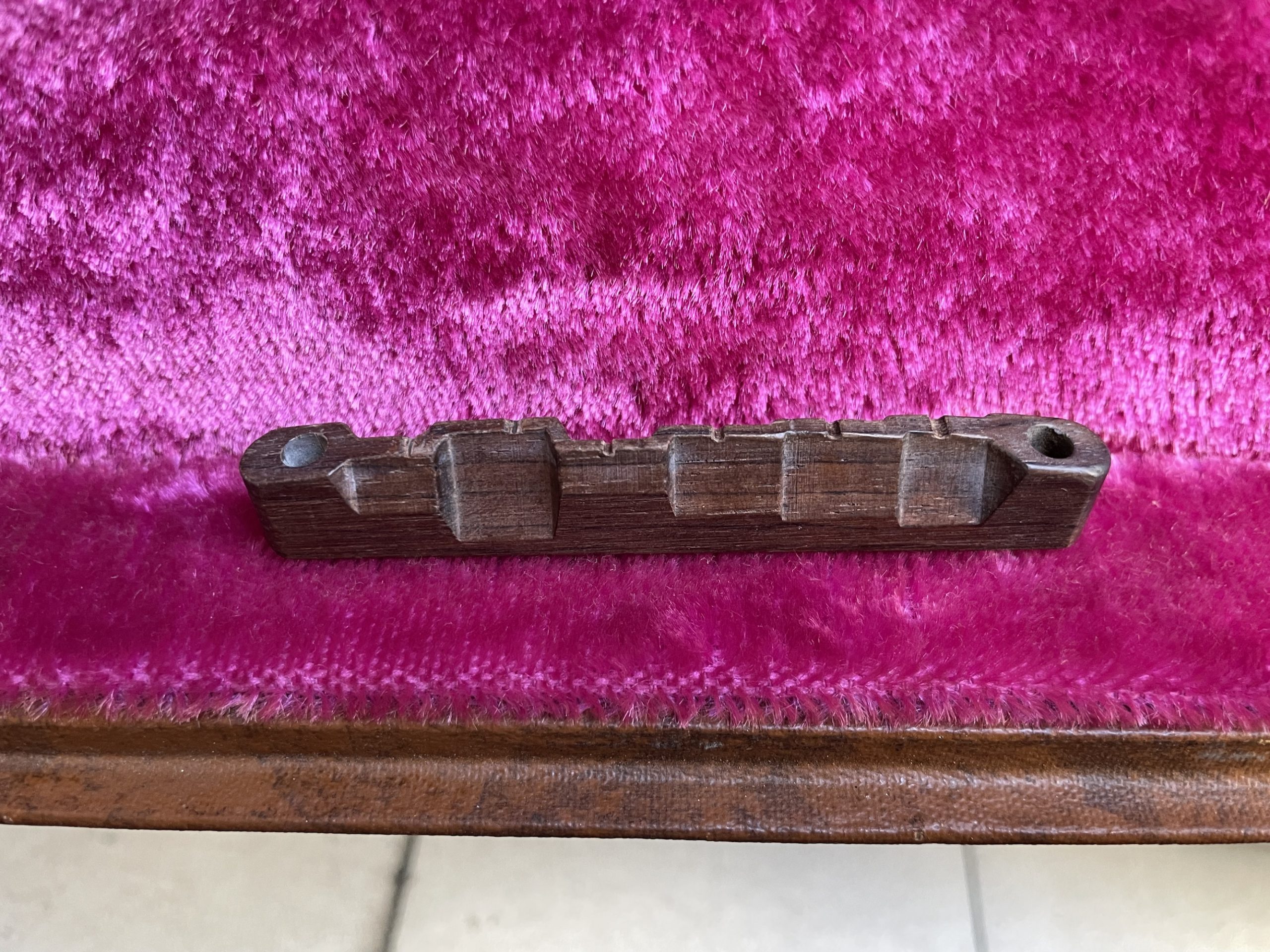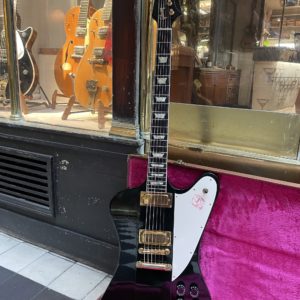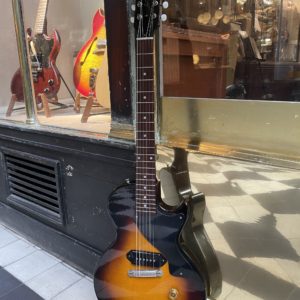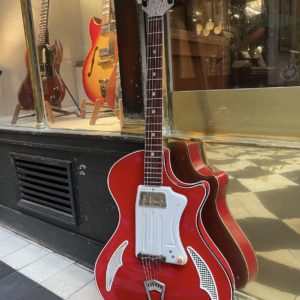1953 GIBSON SUPER 400 CES
€29.850,00
In stock
The prices indicated correspond to the price in the case of payment in-store or by bank transfer. In the case of payment by credit card via the website, a processing fee of [3.25% + €0.25]* will be applied to the total amount of the basket, including delivery costs.
Extremely rare 1953 Gibson Super 400 CES, in exceptionally original and well-preserved condition.
Gibson’s highest-end archtop electric guitar, the 18-inch Super 400 CES (Cutaway Electric Spanish) has been a staple of the brand for decades and a firm favorite from the 1950s to the present day. The initial version, equipped with a pair of P-90 pickups and the Venetian cutaway, was launched in 1951; a second version was introduced to the catalog in 1954 with Alnico No. 5 pickups, also known as staple pickups. The example presented here has an Artist serial number dating it to around September 1953: it is one of the very first models built with the new pickup type, which would be used until 1957 and the introduction of humbuckers. It’s worth noting that this is one of 16 identical guitars produced that year, and the fact that it features Alnico pickups makes it all the more remarkable!
This guitar encapsulates all the characteristics of a Super 400 acoustic guitar with the addition of two built-in pickups, making it an instrument worthy of Gibson’s most distinguished clients—we’re obviously thinking first and foremost of the Country & Western sound of the dynamic duo of Merle Travis and Joe Maphis, original endorsers of the model from the early 1950s, each of whom owned a model customized to their taste! Later, a whole roster of the greatest names in classic jazz—Kenny Burrell, George Benson, and many others—would join the band. Constructed entirely of solid woods, with a fully sculpted top and back, the Super 400 CES is a tour de force of guitar making, firmly aimed at the high-end of the market. As proof, Gibson initially offered the Sunburst cutaway model for $595 (plus $60 for the case)—an exorbitant price for an electric guitar at the time, yet indicative of the acceptance of purely amplified instruments among professional musicians. By the end of 1954, the price had climbed to $750 + $75 for the case; for comparison, the most expensive solidbody model at the same time, the Les Paul Custom, sold for $390!
This exquisitely elegant example features the following: the two-piece back is carved solid flamed maple, the top is carved solid spruce. The laminated maple neck features the typical round profile of the early 1950s, and the original dark Sunburst finish is also common to the period. The top, back, fingerboard, and headstock are outlined with multiple black and white binding; the ebony fingerboard and headstock are adorned with traditional Deco-style mother-of-pearl split inlays.
All hardware is gold-plated, including the tailpiece engraved with the “Super 400” model name, as well as the full set of Kluson Sealfast tuners with plastic Keystone-style buttons. The two original Alnico No. 5 pickups are wired to standard Gibson harness with volume and tone controls for each pickup and a selector switch (this wiring system was introduced with the Super 400 CES in 1951). The original electronics are complete and fully functional. All original plastic parts are also present and remain in perfect condition. The original rosewood bridge is retained in the case; the guitar is currently equipped with a mid-1960s Gibson Tune-o-Matic allowing for more accurate intonation adjustment.
We have thoroughly setup the instrument, including a full fret planing and polishing, nut adjustment, action and intonation adjustment at the bridge, and cleaning of the electronics. Sold in perfect playable condition. The condition of the instrument, which could be described as near mint, is absolutely breathtaking after more than seven decades.
Sold in its original Lifton case, accompanied by its certificate of authenticity by Jérôme Casanova.
